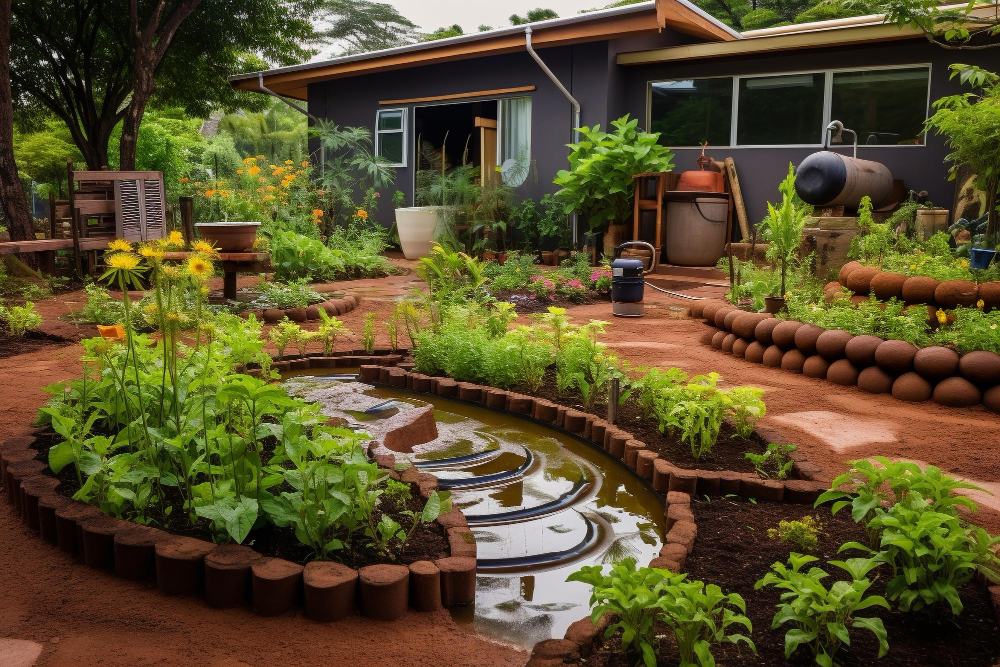Planting for Tomorrow: Building an Eco-Friendly and Future - Proof Garden

The climate is changing and this is affecting your garden. Hotter summers, colder winters, more rain and longer periods of drought all take their toll on the landscape around your home. The amount of effort needed to keep your garden looking good keeps increasing. Using a professional landscaping company to care for your garden and to keep it safe from the hazards of climate change is the best choice. That said, having a working knowledge of how to future-proof your garden will allow you to discuss the issues with the experts to ensure that the solutions that work for you within your budget, are the ones that are implemented.
- Eco-Friendly Landscapes: This is a key factor in the future-proofing process and an ideal point to start the sustainability journey.
- Rainwater harvesting is a great starting point. If you’re up for it, you can make it a DIY project or ask a landscaping company for help.
- Mulching helps to retain moisture and reduces the amount of watering required and also helps retain soil nutrients.
- Grass sodding is great for a garden. You can rent a sod installation machine or better yet, have a landscaping professional do it for you.
- Composting, worm farming and replacing chemicals with natural pest control methods (where viable) will all promote a healthy garden ecosystem.
- Better Drainage: Upgrading the garden’s drainage will help save water, prevent loss of topsoil and minimize the possibility of waterlogging. Using permeable stone or grouts will create a lasting drainage system. The permeable stone or grout will allow water to slowly and naturally soak into the earth.
- Add Shade: Rising summer temperatures are hard not only on people but also on the garden. Plant trees, hedges and large plants to create areas of shade for heat-sensitive plants. Install walls and fences that will also create patches of shade.
- Climate Resilient Plants: Use plants that adapt to the changing and variable climatic conditions. This will reduce the amount of replanting and plant replacement that will need to be done in the future. With water availability often being a problem, drought-resistant Mediterranean plants are a good option.
Also Read: Common Landscape Lighting Mistakes to Avoid
- Use Light-Colored Paving Material: Light-colored paving absorbs less heat than dark colors so the amount of heat that radiates from the paving into the ground is reduced.
- Check on What’s Growing: Getting rid of weeds and invasive species before they can multiply will protect the plants you have in the garden from damage.
- Encourage Pollinators: By introducing plants that attract bees, butterflies and other pollinators, you are both keeping your plants healthy and also contributing to a healthy local ecosystem.
The right way to future-proof your garden so that you can enjoy the open-air part of your home without being hassled by potential future headaches is by using a professional landscaping service. The company will install, modify, renovate and maintain your garden as you want it done so that all you need to do is spend time being happy in it. If you live in the California Bay Area, contact Dooling Landscape, a highly reputed landscape service in San Jose that is known for its technical and aesthetic abilities and for focusing on what customers want.
Frequently Asked Questions
1. How can I make my garden more eco-friendly?
Start with rainwater harvesting, mulching, grass sodding, composting, and using natural pest control methods.
2. What's the importance of better drainage in my garden?
Upgrading drainage saves water, prevents soil loss, and avoids waterlogging, promoting a healthier garden.
3. How can I protect my plants from rising temperatures?
Plant trees, hedges, and large plants for shade, and use light-colored paving to reduce heat absorption.
4. Which plants are best for a changing climate?
Choose drought-resistant Mediterranean plants that adapt well to variable weather conditions.
5. How can I attract pollinators to my garden?
Introduce plants that attract bees, butterflies, and other pollinators to maintain a healthy ecosystem.
- Apr 18, 2024
